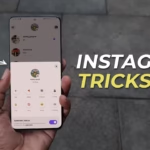What flips a short clip into a million-view moment? In 2025, the TikTok algorithm is sharper, faster, and more search-aware than ever. It predicts what viewers want, then tests content at speed. Uncover the real reason why some TikToks go viral overnight. Learn the latest algorithm secrets and content hacks.
This guide breaks down how the feed is ranked, why certain posts explode, and which small edits can raise watch time and reach. It covers the signals that matter, the SEO layer TikTok now uses, and practical tactics creators and brands can apply today.
The Core Signals TikTok Reads in 2025
TikTok’s recommendation engine sorts videos using three pillars: user interactions, video information, and user information. Each signal helps the system predict who will care about a video and who will skip it. That prediction is what sends posts into larger pools.
Here is a quick snapshot.
| Signal | What It Includes | Why It Matters |
|---|---|---|
| User interactions | Watches, rewatches, likes, comments, shares, skips | Shows real interest and intent |
| Video information | Captions, hashtags, on-screen text, sounds, effects | Helps the system understand the topic |
| User information | Language, location, device, settings | Matches content to the right audience segments |
For more background on how TikTok personalizes feeds and tests engagement, see this overview of the system’s ranking behaviour: How the TikTok Algorithm Works in 2025 (+9 Ways to Go …).
Why Some Videos Go Viral Overnight
Viral surges often look random. They are not. The platform gives most new uploads a small initial audience to test watch time and responses. When a video earns strong early signals, it gets pushed to larger groups. If those larger groups show the same strong signals, the push grows again, sometimes in steep waves.
The two biggest drivers:
- Watch time and completion rate: When people finish a clip or replay it, the video earns more reach. Loops count as a strong interest.
- Engagement actions: Comments, shares, and saves suggest the content is worth spreading.
That feedback cycle can happen fast, which is why a clip might gain little in the afternoon and explode by morning. The system spotted proof that viewers stayed to the end, then kept showing it to bigger audiences, where the same behaviour repeated.
The New Search Layer: TikTok as a Discovery Engine
In 2025, TikTok acts more like a search engine. It ranks videos not only for passive feeds, but also for intent-based queries. When viewers search “best camera app for beginners” or “how to make cold foam,” the platform looks for:
- Clear keywords in captions and on-screen text.
- Hashtags related to the topic.
- Audio and visuals that match the theme.
This means content formatting now matters as much as the idea. If a tutorial is not labelled like one, it is harder to match with active searches. That is lost reach.
Try these simple format cues:
- Include a short, plain caption that names the topic and action, for example, “How to fix a squeaky door in 60 seconds.”
- Add on-screen text that repeats the keyword within the first 2 seconds.
- Use a focused set of hashtags that fit the topic, not a pile of broad trends.
The Hook: Win the First 3 Seconds or Lose the Feed
The first three seconds decide the rest. If viewers pause and stay, the system rewards the clip. If they scroll, the reach dries up. Strong hooks do not need flashy effects; they need clarity and curiosity.
Proven openers:
- “Here is why your [thing] keeps failing.”
- “Watch this before buying [product].”
- A visual before-and-after or a bold result up front.
- A quick promise: “Save this for later if you do X.”
Creators who front-load value keep completion rates healthy. That is the simplest way to signal quality in a short format.
Content that Feeds the Algorithm
Content format, not just the topic, shapes results. These tactics align with how the system scores quality and relevance:
- Use trending audio only when it fits: Sounds can widen reach, but they must match the story. Relevance beats noise.
- Show, then tell: Visual proof first, context second. The platform counts attention, not intentions.
- Add subtitles and on-screen text: Many viewers watch with sound off. Clear text boosts retention and helps search match.
- Invite specific interactions: Ask for comments that are easy to answer. Example: “Which step took the longest for you?” That type of prompt can raise the depth of engagement.
Post Frequency and Timing
Freshness matters. New videos often get a small test bump, and consistent posting keeps signals flowing. Daily or near-daily posting helps the system understand a topic lane, which increases the odds of matching content to the right audience.
Timing affects testing pools, but not in a magic-hour way. It is better to keep a steady cadence than watch for patterns in watch time and comments by hour and day. Use those patterns to refine a schedule.
For a practical walkthrough on tuning content for reach and engagement, this guide covers ranking inputs and tactical steps: TikTok Algorithm Guide 2025: How to Get Your Videos on ….
Captions, Hashtags, and Sounds: Small Tweaks, Big Impact
Think of metadata as the map for the algorithm. It needs clear coordinates.
- Captions: Keep them short and keyword-aware. Place the main phrase near the start.
- Hashtags: Mix one or two niche tags with one broad tag. Avoid long hashtag chains.
- Sounds: Choose audio that fits the topic, not just what is trending. If a sound trend in the same niche, that is ideal.
Example approach:
- Clip topic: “Beginner pour-over coffee guide”
- Caption: “How to make pour-over coffee at home”
- Hashtags: #pourOver #coffeeTips #homeCoffee
- On-screen text: “Pour-over coffee for beginners”
This setup gives the system a clear topic and a clear audience. It also positions the video for search queries about “how to make pour-over coffee.”
Myths That Waste Time
A few beliefs keep coming back, even though they do not hold up in tests:
- “Only short clips work.” Longer videos can win if the content holds attention. Completion rate is relative to length.
- “Every video needs five trending hashtags.” Hashtag stuffing confuses the topic and can hurt matching.
- “Editing tricks beat story.” Flashy transitions do not fix a weak idea. Value and clarity come first.
- “Posting at one secret time solves reach.” Timing is a small factor. Watch time and relevance drive the push.
A Simple, Repeatable Workflow
Creators who grow in 2025 tend to follow a tight loop of ideation, testing, and tuning. Here is a lightweight process that fits one-person teams and small brands.
- Idea list: Keep 20 to 30 repeatable prompts tied to a clear topic lane.
- Script short: Write one or two lines that explain the hook and payoff.
- Record in batches: Film 3 to 5 clips per session to stay consistent.
- Edit for clarity: Cut filler, add subtitles, front-load the result.
- Publish and tag clean: Use the keyword early in text, pick a fitting sound.
- Check signals at 1 hour, 24 hours, 72 hours: Note completion rate, average watch time, saves, and comments.
- Iterate: Keep what holds attention, drop what stalls in the first 3 seconds.
Why This All Works
The algorithm is not guessing at random. It is scoring attention, interest, and relevance at each step. Strong content makes scoring easy. Clear topics, clean captions, and practical hooks give the system a confident match. That confidence is what puts a clip in front of more of the right viewers, not just more viewers.
Conclusion: Make the Algorithm Your Editor
The platform rewards content that earns attention, invites a response, and matches clear search intent. Focus on the opening seconds, keep topics tight, and let simple metadata do its job. Test often, post consistently, and use results to refine the next batch.
Want a next step? Pick one topic lane and plan three videos that promise a clear payoff in the first three seconds. That small change can raise the completion rate fast. The fastest wins start with a sharper hook and a clearer topic. Keep it simple, keep it focused, and let the system learn from strong signals. That is the path to repeatable growth.















